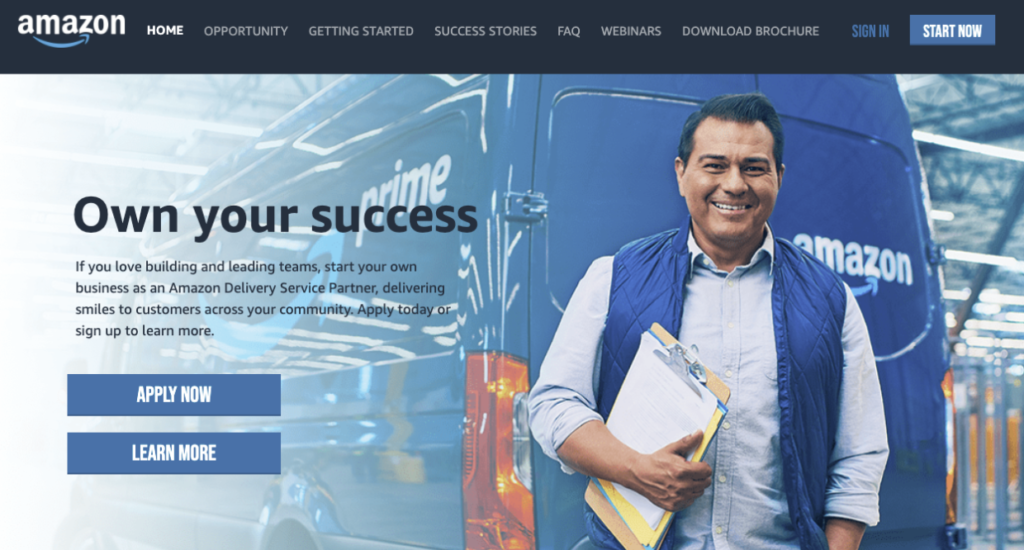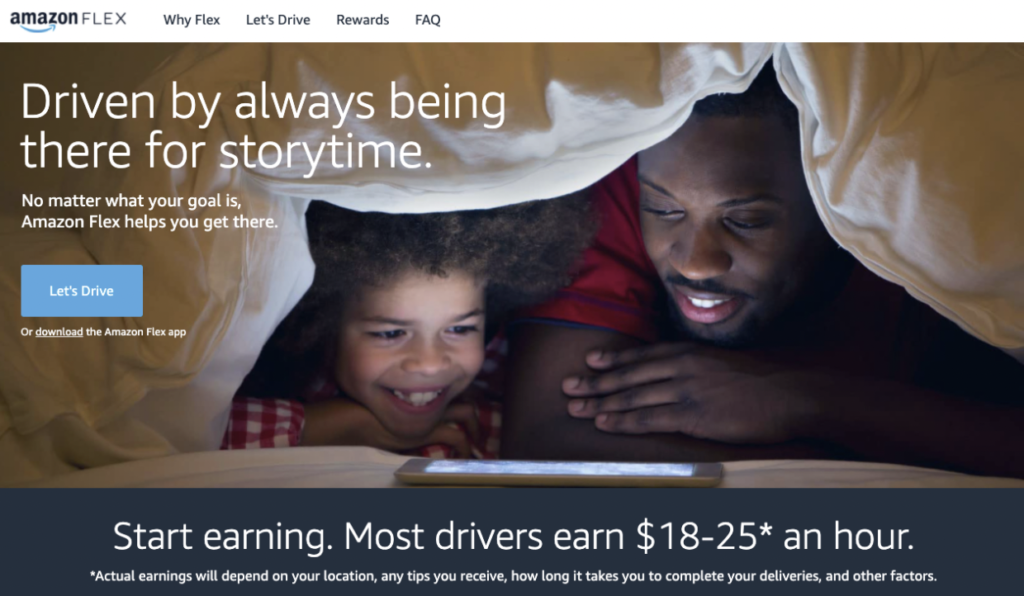Originally published June 18, 2019. Revised and updated December 1, 2023.
Ever since Amazon introduced Amazon Logistics in 2018, a lot of questions have been raised about the future of shipments on the platform.
Some saw this change as a direct replacement for major carriers like FedEx and UPS, while others embraced it as an extension of the Amazon logistics network that allows for faster and more flexible delivery.
Indeed, during the pandemic, Amazon Logistics has expanded more rapidly, and in 2021 Amazon Logistics surpassed FedEx in market share.
But what is Amazon Logistics, how are orders tracked, and how does it impact your options as a seller? This guide will cover important best practices you should follow to address the unique challenges of this shipping option.
What Is Amazon Logistics?
In a nutshell, Amazon Logistics is the delivery service run by Amazon. A network of independent third-party logistics providers performs delivery services for Amazon Logistics. These Delivery Service Providers – confusingly Amazon calls these DSPs, also the name for an ad platform – utilize an assortment of vehicles, including vans, motorcycles, bicycles, and in some cases, delivery by foot.
Amazon has requirements in place to manage these providers upon sign-up (setting insurance, licensing, etc.), and Amazon’s software manages the whole process from pickup to delivery. The service operates from 8 am to 8 pm every day of the week.

How Amazon Logistics Tracking Works
Orders are managed and tracked via Amazon’s central platform that supports typical carriers (such as FedEx and USPS), Amazon’s own Transportation Services, and third-party Amazon Logistics providers.
One unique feature that has been added solely for packages shipped via Amazon’s own delivery services is a real-time map-based tracker that allows you to view the carrier’s progress to delivery directly.
Third-party Amazon Logistics carriers utilize Amazon’s Flex software to manage their deliveries. Many commentators have compared Flex to Uber or Doordash, identifying it as a major leader in enabling the gig economy.
Flex includes four delivery options to which carriers respond, Amazon.com, Prime Now, Amazon Fresh, and Store Orders. Delivery and tracking options vary among these options, so let’s dive into the best practices to get you started.
How to find tracking Number on Amazon?
Amazon Logistics tracking assigns a Transportation Booking Number to each shipment. So, if you’re wondering, “Is TBA an amazon tracking number?” the answer is simple – yes. But where can you find it? Customers ofthen ask about that, so as a seller, you can answer them quickly and increase your brand’s trustworthiness. If tracking is available (and it should be), customers can find their package tracking number on the Your Orders page. So:
- Go to Your Orders.
- Go to the order you want to track.
- … And that’s about it!

Best Practice 1: Help Your Customers Make The Most Of This Service
Helping your customers to understand the package-tracking process and the data available to them can reduce confusion over package whereabouts and prevent shipping issues. It is as important as ever to keep your customer communications frequent, timely, and clear. In order to do this, you need to understand how does Amazon track packages.
In your post order message, in addition to sharing the usual tracking info, you can also inform customers about tracking their shipment in real-time via “My Orders.” They can also sign up for text updates from Amazon regarding their shipment status.
Customers will be able to view what carrier their order shipped with, the address it’s shipping to, and updates on the package’s location including arrival and departure from facilities. When “AMZL_US” appears associated with an order that indicates it is being handled by Amazon Logistics.
Best Practice 2: Take An Active Role In Managing Shipping Issues And Feedback
Because the Amazon Logistics providers are third-party, it’s impossible to fully ensure the quality of their delivery. Even though Amazon has tracking in place, problems do arise, and anything that happens reflects on both Amazon and you as the seller or brand.
That said, delivery problems could impact your seller rating. Few things peeve customers more than a failed promise of two-day Prime shipping.
It is important to reiterate, in all your customer communications, that they can direct all inquiries and issues to you. This is especially important today given the growing number of shipping options for customers. It’s easy for shoppers to get confused about who’s responsible for their order and who to contact. Having a single point of contact they can trust to take action is great for you and for them.
Since delivery time windows can be fluid based on any logistics provider’s tracking, you may want to time your feedback request messages for 8 pm on the day of a successful delivery (the Amazon Logistics scheduled cutoff time) to make sure the message arrives in a timely way without being late.
Best Practice 3: Stay Up To Date On The Latest Logistics Offerings to All Regions You Ship
Amazon tracking offers a number of different shipping programs such as Flex, Lockers, Fresh, and Prime Air. As a seller, these services enable you to offer expedited shipping, but the availability of some services — such as Prime Now — differs based on the city and geographic area.
Knowing which options your customers have available to them will keep you informed enough to answer urgent questions and manage issues properly if they arise. Any confusion can often be the start of poor feedback or customer dissatisfaction that you certainly want to avoid.
What is Amazon Logistics? Tracking, shipping & delivering. The Bottom Line
It is clear that Amazon is poised to be the dominant platform for ecommerce fulfillment for the near future, so, as a seller, it’s important to keep up with the latest offerings and best practices to ensure your customers get what they ordered in a timely manner.
Meanwhile, it’s also true that crisis stresses on every system have exposed the fragility inherent in relying on a single system. Many sellers have found value in building redundancy by utilizing a 3PL alongside Amazon.
With their added focus on logistics and third-party shipments, it’s critical to help your customers place, manage, and track their orders. Ensuring consistent deliveries and understanding how the Amazon supply chain works can mean the difference between happy and confused or even frustrated customers.
Happy customers are more likely to become repeat buyers and leave you positive feedback, which means more visibility to help you stand out from the competition.





